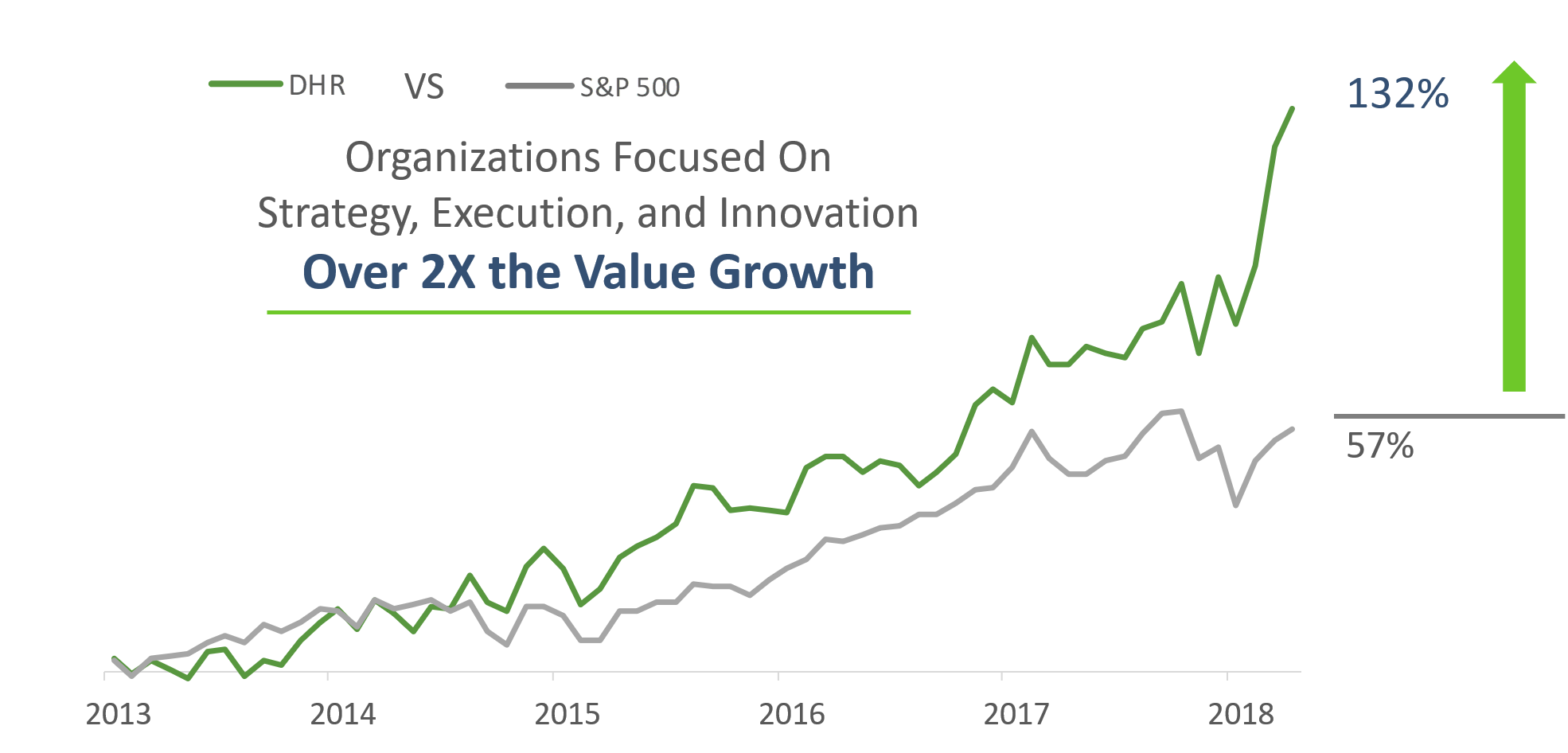Three Reasons Transformational Leadership Outperforms Operational Leadership on Business Growth by Over 2X

Recent studies from industry leaders and the Product Development Management Association have shown that Transformational Leaders (TLs) outperform their Operational Leader (OL) peers, many by more than 100% measured over a five-year period. That drastic contrast results in over twice the growth rate for companies with a transformation focus.
Customer-Centered Strategy vs. Disparate Objectives
Transformational leaders have a more insightful external vision, translated into actionable growth. With TLs, strategies culminate from an externally focused strategic value gap. Once understood, this gap becomes the guiding light for aligning and driving transformation throughout the organization.
For operational leaders, during strategic planning, the overwhelming amount of energy “in the room” is usually from internal disciplines. This tends to shift the discussion to internal gaps that have nothing to do with real strategy. Subsequently, a set of objectives are created to improve the business but are not cohesive towards growing its potential value into kinetic value.
Coaches or consultant facilitators can often create a devastating impact if they allow this to happen, and too many do because they themselves are relics of an old thinking, slower world, or not professionally qualified.
Controlled Execution vs. Ad Hoc Projects and Review Meetings
Transformation leaders systemically execute on their strategies by leveraging a framework of purposeful rhythm control meetings. These progress cycles run on a tuned cadence and are primarily geared to alignment and problem solving. Usually designed in a nested – annual, quarter, month, week – frame with key performance indicator (KPI) understanding, where each time horizon focuses on a translated, therefore connected priority set, all integrated to accelerate enterprise value growth.
This control structure keeps your business balanced between creating future growth value and performing on current operations.
Operational leaders, on the other hand, typically don’t link KPIs to functional/cross-functional transformational objectives or they implement a standard KPI model, such as Balanced Scorecard. This sets up for the function or objective leader to escape true ownership of the transformational change outcome.
More importantly, this well-meaning yet flawed approach leads the organization to be off balance. So much emphasis is placed on current operations, it almost always negatively impacts growth.
Empowered People vs. Squandered Talent
A periodic Gallup Poll consistently reveals that 67%-69% of US employees are disengaged at work. People create incredible potential energy, it's available to work on transformation and it’s free. Leaders already have it, they just need to unleash it.
Driving growth initiatives causes the organization to communicate vertically and horizontally. This is the foundation for people engagement and empowerment. It is what transformational leaders are so good at tapping into.
Even though an employee may not be qualified to lead a transformation initiative, this is the perfect opportunity to lever people transformation by assigning it and coaching them. This type of work assignment engages and empowers a deeper and broader commitment within the company. It also requires the person to acquire new skills. Most importantly, it is a significant cultural change lever. Transformational leaders get this.
Operational leaders on the other hand are more focused on the work and miss a great lever every company has at their fingertips, their people. Even though most companies communicate that their people are their most important asset, they actually don’t act as if they are. They view people as being there to get the work done as opposed to engaging them to participate in leading transformational growth, which usually fosters people growth. This may be a hidden opportunity.
Summary
Corporations such as Danaher have already shown that the switch to transformational leadership principles is consistently proven to accelerate value growth, as evidenced by their outpacing of the S&P 500 year after year. However, doubling growth is just the beginning. Underpinning this incredible performance difference is the principle of compounding transformational gains. More on the compounding effect in a future article.

Meanwhile the comparison made here begs the question, how difficult is it to transition from operational to transformational leadership? The short answer is that it’s a relatively simple process and the benefits are huge, especially over the long term because of the principle of value compounding. However, it may require the acquisition of new capability and automation. Operational leaders could wake up tomorrow and start to implement a shift in strategy that would set a compelling new growth trajectory, all while increasing employee engagement and departmental alignment.
Pivotal Innovation offers a solution with the potent combination of copiloting services and automation software, each complimenting the other to drive tangible results. We give leaders the ability to deliver top-down strategy and bottom-up innovation that will propel value growth forward, and the tools to make sure the whole organization stays on track every step of the way. In short, we help grow better companies faster.
If you’re interested in learning more about how we can facilitate your journey to 2x growth rate, we are offering 20% off to the first 5 new client engagements before December 31, 2020. We can help you unlock the kind of growth you know your company is capable of. It’s worth a 15-minute call to explore how.